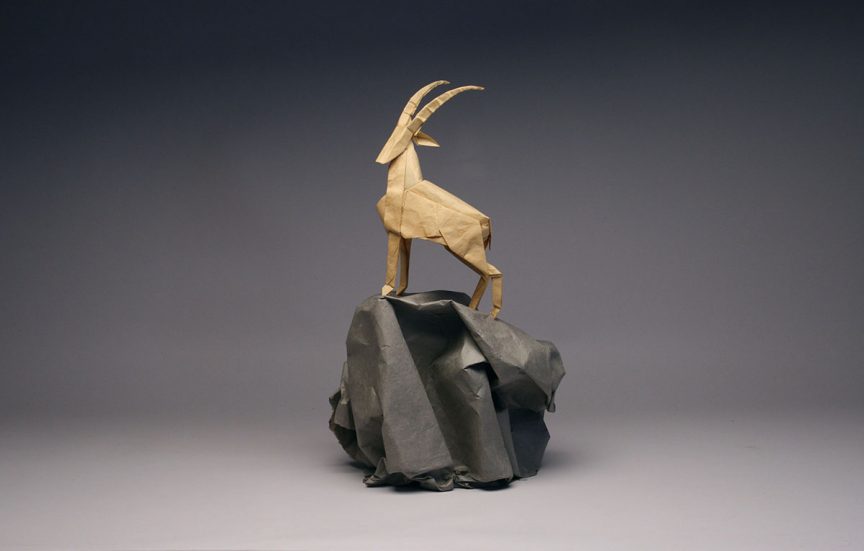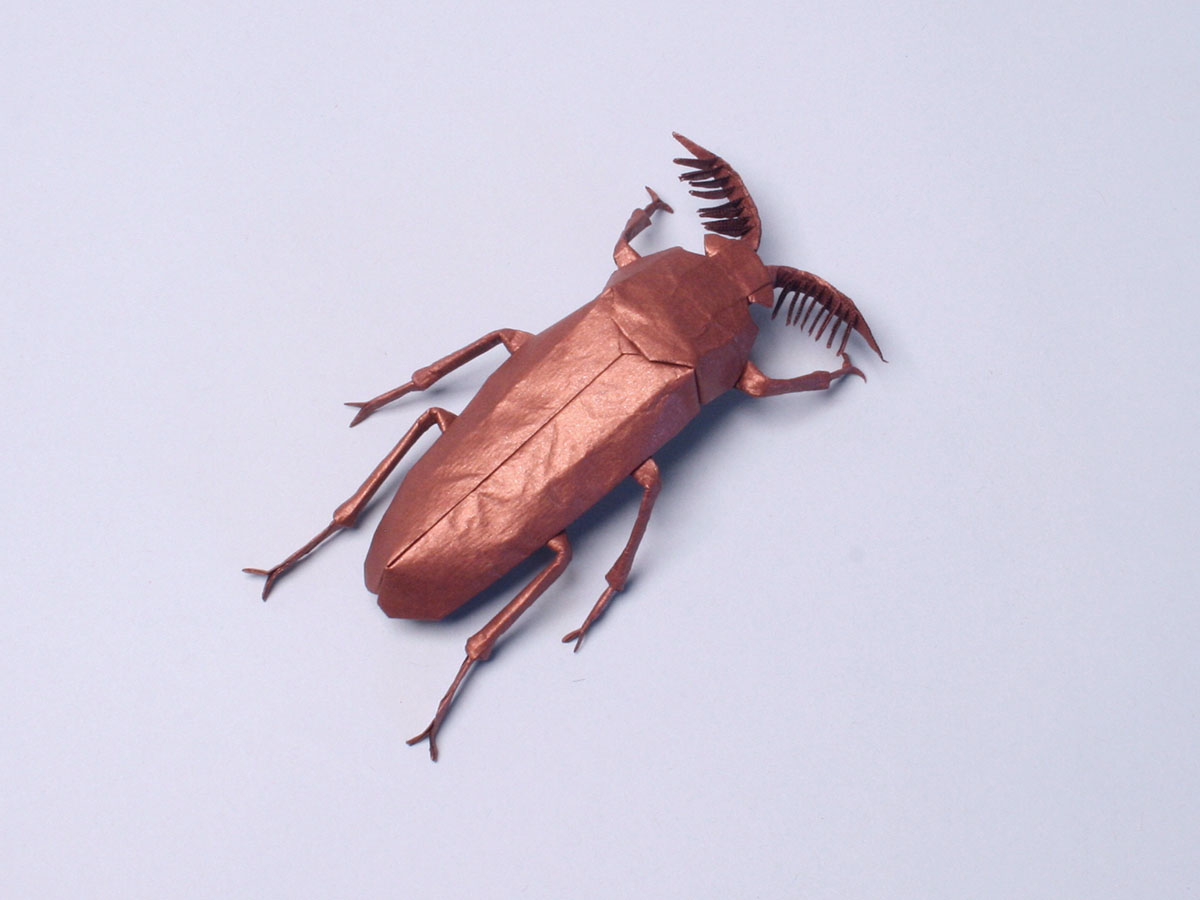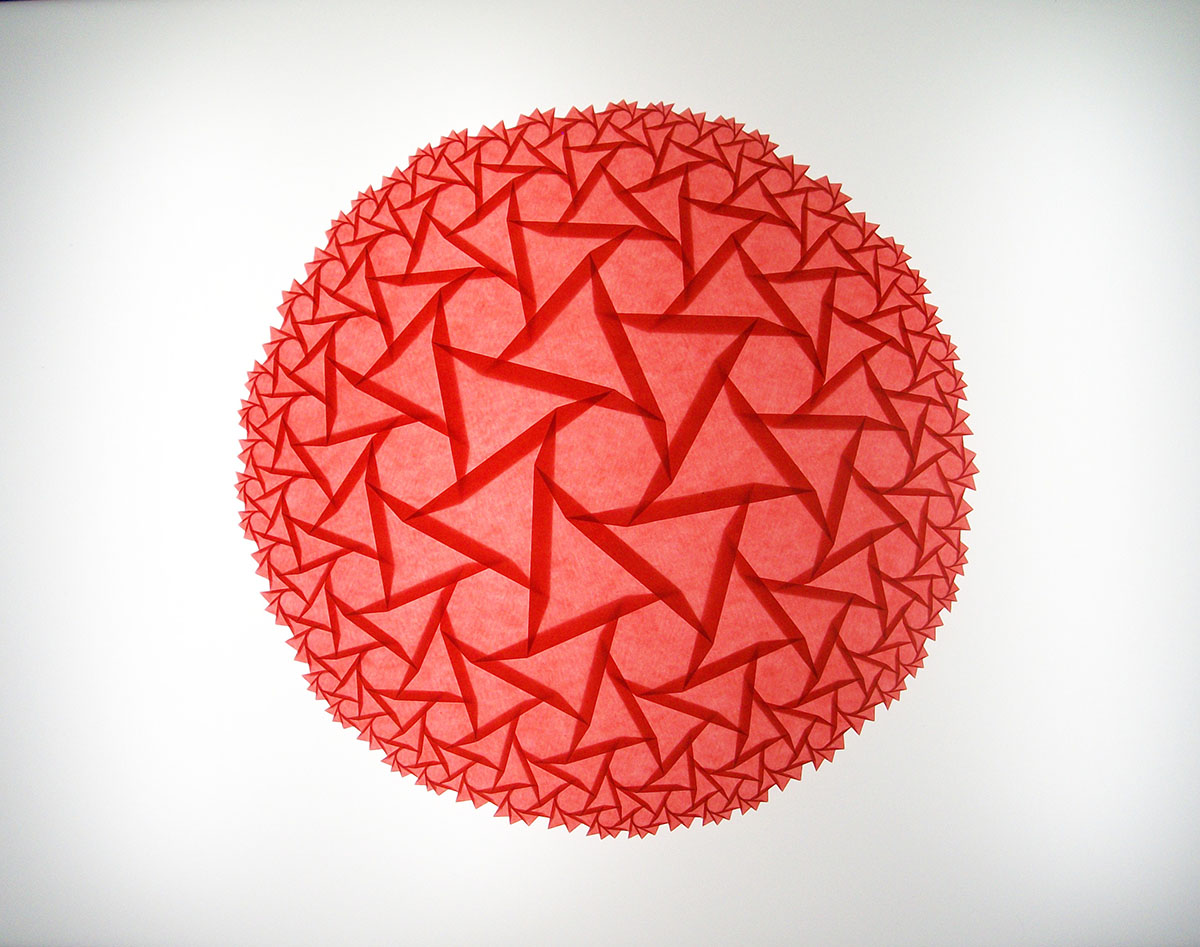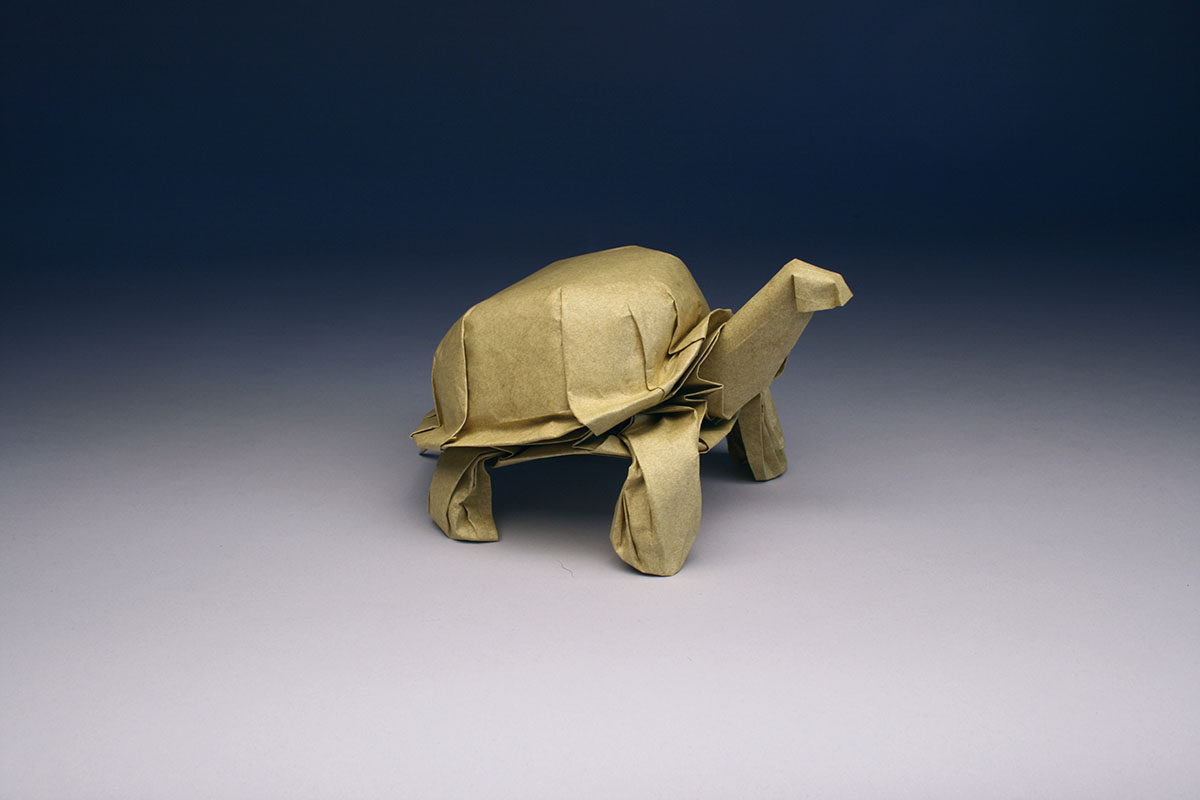Name: Robert J. Lang
Which came first in your life, the science or the art?
The art came first. I started origami at age six; although I had an interest in natural history from a fairly young age, my scientific interests and education came later.

White Rhinoceros, Opus 714
Which sciences relate to your artistic practice?
Mathematics (though not technically a science, it’s often grouped with science) is intimately tied to my art: math defines what is possible in origami, and provides a toolkit for figuring out how to create the forms that the artistic muse inspires.
What materials do you use to create your artworks?
I use consumable materials which include paper (of course), but also foldable materials such as wood laminates, metal meshes and foils, plastics, and other polymers. I also use tools and equipment such as computers, pencil and drawing paper, a laser cutter, and various other bits and pieces of technology.
Which artwork/exhibition you are most proud of?
Usually, the artwork that I’m most proud of is the one I’ve most recently worked on. Currently, I’m developing a hunting wolf that I like very much. The final version is not yet finished, but I’m quite pleased with how it’s going.
Which scientists and/or artists inspires and/or has influenced you?
There are so many that it’s almost too hard to name everyone. On the scientific side, they range from the author of my favorite quote, Louis Pasteur (“Chance favors the prepared mind”), to a math professor, Donald S. Cohen, who influenced both my mathematical approach and my teaching style. On the artistic side, there have been many origami artists including Akira Yoshizawa, Neal Elias, John Montroll, and Michael LaFosse.
Share this Post









